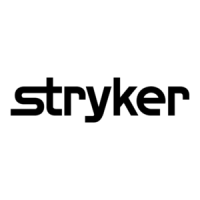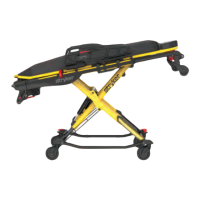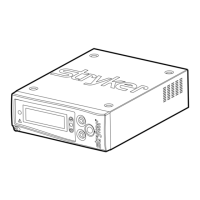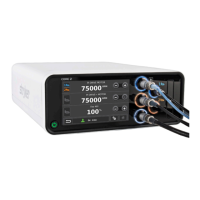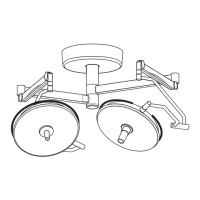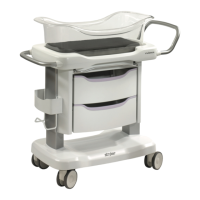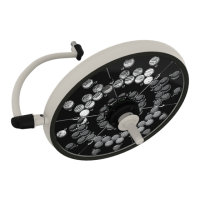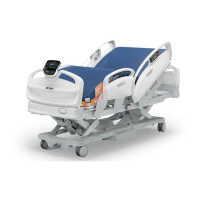0702-002-700 Rev-J EN
www.stryker.com 5
• Onlytrainedandexperiencedhealthcareprofessionalsshouldusethis
equipment. Before using any system component, or any component
compatible with this system, read and understand the instructions. Pay
special attention to WARNING information. Become familiar with the system
components prior to use.
• Thehealthcareprofessionalperforminganyprocedureisresponsible
for determining the appropriateness of this equipment and the specific
technique used for each patient. Stryker, as a manufacturer, does not
recommend surgical procedure or technique.
• DONOTusethissystemoutsidethescopeofthedefinedindicationsfor
use (for example with Octopus
®
tissue stabilizer-type devices or Bean Bag
body position-type devices).
• HIGHVACUUMandHIGHFLOWDEVICE[530mm-Hg,21inchHg,71kPa]
– DO NOT apply high flow suction in applications that may result in severe
injury or death, for example, passive chest drainage.
• DONOTapplyhighflowsuctionorallowextendedexposureofsuctionto
tissue associated with procedures that require either no suction, low vacuum
or low flow suction, for example, passive chest drainage. Failure to comply
could result in injury to vital anatomical structures, and/or hemorrhage, both
of which may result in serious injury and/or death.
• DONOTusethisdevicetoprovidesuctiontoothersuctionpowered
accessories such as Pleur Evac
®
devices.
• DONOTusethisdevicewithclosedwounddrainagesystems.
• DONOTusethisdeviceforpostoperativeuse.
• ALWAYSconsiderthetypeoftissueassociatedwiththesurgicalprocedure
BEFORE using this system.
• ENSUREthatinlowlevelsuctionapplicationsthattheappropriatesuction
device is used. IT IS RECOMMENDED that an alternate source of low level
suction be available for low level suction applications (e.g. suctioning an
airway or near vital anatomical structures).
• ENSUREtheuserhasaclearunderstandingoftheunitsofmeasurethat
are displayed. It is recommended that you set your units of measure to
mm-Hg.
• ENSUREthelevelofsuctionhasbeencheckedandisappropriateforthe
planned procedure.
• ENSUREthedevicecontrolpanelcanbeclearlyseenandisnotcoveredby
drapes or other objects.
• ENSUREthatallusersofthisNeptunedeviceareadequatelytrainedonthe
appropriate use of the device and are fully aware of the applications for
which it is intended to be used and the risks of using it improperly.
• ALWAYScloseallunusedportsandremoveallunusedtubingto
maintain optimal suction levels. The suction levels of each canister are
interdependent and linked to a common vacuum source. Failure to comply
may result in the unexpected reduction of suction and patient injury.
• DONOTusethissystemforapplicationsthatrequireaconstantvacuum
level.
• Thesuctionlevelofthisproductrelativetoitsvacuumlimitsettingmay
fluctuate significantly but will not exceed its limit. DO NOT use this system
ifvacuumfluctuationmaycausepatientinjury.ALWAYSconsiderthetype
of surgical procedure before using this system.
WARNINGS:
User/Patient Safety*
• Uponinitialreceiptandbeforeeachuse,operatetheequipmentand
inspect each component for damage. DO NOT use any component if
damage is apparent.
• Performrecommendedmaintenanceasindicatedintheseinstructions.
Only trained and experienced healthcare professionals should maintain this
equipment.
• DONOTusethisequipmentinthepresenceofamixtureconsistingofa
flammable anesthetic and air or oxygen or nitrous oxide.
• Takespecialprecautionsregardingelectromagneticcompatibility(EMC)
when using medical electrical equipment like this system. Install and place
this system into service according to the EMC information contained in this
manual. Portable and mobile RF communications equipment can affect the
function of this system.
• TheBloodbornePathogensStandardprovidedbytheUnitedStates
Occupational Safety and Health Administration (US OSHA) requires all
workers with exposure to “potentially infectious materials” wear the correct
personal protection equipment and be offered immunization against hepatitis
B. As an additional precaution, these workers should receive tetanus
immunization and boosters when required.
• Handlingbiohazardwasteispotentiallydangerous.ALWAYSfollowcurrent
local regulations governing biohazard waste to safely handle and dispose of
surgical fluid waste.
• Filters,manifolds,suctiontubing,andsmoketubingwillcontainsurgical
wasteafteruse.ALWAYShandlethesedisposableaccessoriesas
“potentiallyinfectiousmaterials”afteruse.ALWAYSwearglovesand
protective eye wear when removing and disposing of these disposable
accessories.
• DONOTusethesystemifleakageofsurgicalfluidwasteoccurs.
Disconnect power immediately and call Stryker Neptune customer service.
• ALWAYShavemorethanonepersonunpackandliftthisequipmentoffthe
shipping pallet.
• ALWAYSusethehandletomovetherover.DONOTpushorpulltherover
by grasping any receptacle or the outer surface. NEVER hang any heavy
object from the rover handle.
• DONOTallowfluidofanykindtospilldirectlyontotheexteriorsurfaceof
the electrically-powered rover.
• ALWAYSensuretheroverisprovidingsuction(vacuumleveldisplayis
greater than zero) and suction is present at the manifold ports when using
an external pumping device connected to the same canister via suction
tubing.
• Iffourormorelitersoffluidwillaccumulateduringasurgicalprocedureand
anexternalpumpingdevicewillbeused,likeanarthroscopicpump,ALWAYS
use the 20 liter canister to collect fluid waste. DO NOT use the four liter
canister or both canisters at the same time. Failure to comply may cause
the system to overflow if the system suction line is not removed or closed.
• ALWAYSkeephandsawayfromthematingsurfacesoftheroverand
docking station during the docking procedure to avoid a pinch point hazard.
• ALWAYSfollowcurrentlocalregulationsgoverningprocedure-specific
suction levels to remove fluid waste safely from a surgical site.
• ALWAYSwearglovesandprotectiveeyewearwhenperformingthedocking
procedure.
• DONOTusetheroveruntilthedockingstationhasbeeninstalledand
tested properly.
• DONOTusetheroveruntilithasbeentestedproperlytoensure
functionality.
• DONOTusethesystemwithpatientsthatarebeingtreatedwith
radioisotopes or hazardous chemotherapy agents.
• Thecanisterscaleandfluidvolumedisplayarenotdiagnostictools.DO
NOT use the scale or volume display to accurately calculate the amount of
fluid loss from the patient.
* If you need more information, contact your Stryker sales representative or call Stryker
Neptune customer service at 1-800-550-7836. Outside the US, contact your nearest
Stryker subsidiary.
Trademarks not the property of Stryker Corporation are the property of their respective
owners.
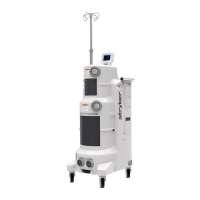
